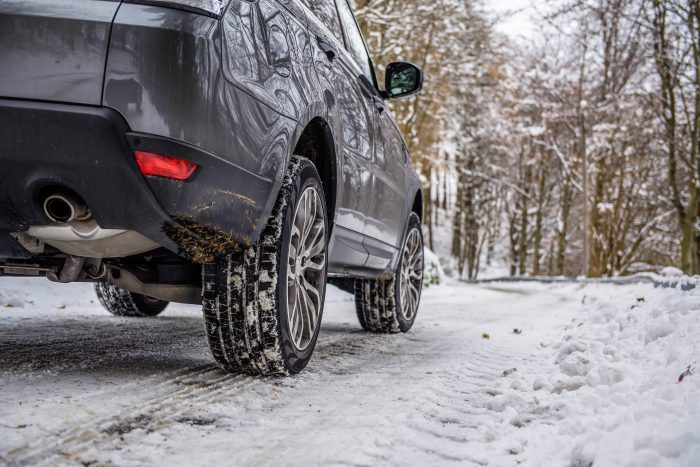Cold weather vehicle tips from AAA
Sustained Sub-Freezing Temperatures Can Wreak Havoc on Vehicles
With predicted temperatures at or below freezing across much of the Northeast for the coming week and beyond, AAA is encouraging drivers to understand the impact of these extreme conditions on their vehicles — and prepare accordingly.
Freezing temperatures can negatively impact vehicle performance in several ways, including:
Drained batteries: Vehicle batteries lose 30 percent of their power when the outside air temperature hits 32 degrees. At zero degrees, batteries suffer a 60 percent loss of slows the chemical reaction that creates the electrical charge, which makes starting a vehicle more difficult — especially with batteries that are three to five years old or those that previously went dead and needed a jump-start. If drivers have batteries older than three years or that have been previously jump-started, they should have their battery tested and, if necessary, replaced.
Decreased tire pressure: Cold also negatively affects tires, which lose about one PSI (pound per square inch) of pressure for every 10 degrees the air temperature drops. Tires also normally lose one PSI per month due to aspiration. Before hitting the road, motorists should make sure tires are properly inflated according to information on the sticker inside the driver’s door jamb.
Frozen fuel lines: Any moisture in a vehicle’s fuel lines can freeze, preventing gasoline from reaching the engine. Drivers should keep their gas tanks at least half full during the winter so that there will be no room for moisture laden air. Extreme winter weather also impacts electric vehicles; the main issue is that cold temperatures may reduce the distance an EV can travel on a full charge. Research by AAA found the average EV’s driving range decreases by 41 percent when the outside temperature dips to 20 degrees and the vehicle’s heating system is on.
EV drivers can improve their vehicle’s performance in the winter by utilizing the following tips:
Don’t let the battery charge drop too low: An EV reserves about 15-20 percent of its charge capacity to heat the battery itself, so it’s critical to be well above that level before hitting the road.
Use heat efficiently: Warming an EV creates a significant drain on the battery. If the vehicle has heated seats and steering wheels, those features offer a more efficient option to provide warmth than heating the entire cabin. Some EVs connect to a smartphone app that allow drivers to warm the vehicle’s cabin to a comfortable temperature at a preset time before use, improving range and leading to consistent vehicle performance.
Park your electric vehicle in a garage, if possible: Garage storage helps to ensure thatharsh weather conditions do not affect the vehicle and helps maintain a warmer temperature, which will aid battery performance. And, with zero tailpipe emissions, EVs can be safely warmed up while indoors.
Plug in when parked for extended time periods: Keeping an EV plugged in help smaintain battery health and prevent range loss. This also helps to keep the battery above freezing to help optimize performance; this occurs whether the vehicle is actively charging or not.
Ensure tires are at the proper pressure: Due to their weight, tire pressure is critical toan EV’s handling and performance. Proper tire pressure also helps to maximize range andensure the correct amount of tire surface grips the road. Overinflated or underinflatedntires can lead to range degradation and compromise safety. AAA provides road service for electric vehicles across the nation with tires the top reason for calls.
Slow down: Higher speeds can negatively impact range in all types of weather. More power is needed to overcome the increased wind resistance, especially in denser, colder air.
Know your vehicle: Some EVs have one motor and function as rear-wheel drive. Thisncan lead to handling challenges in slippery conditions. Dual-motor EVs function as all-wheel drive, providing superior traction and performance.
Drivers of all vehicles should always remove snow and ice from their vehicles before driving. This is critical for maximum driver visibility and to prevent blowing snow and ice from possibly blinding other drivers. For EVs, removing snow is important to reduce weight and air resistance while driving, both of which can negatively impact range. Snow and ice can also cover sensors used for safety features.
AAA urges all drivers to keep a cold-weather emergency kit in their vehicles, complete with gloves, a flashlight, warm clothing, blankets, extra water and food, cell phone charger, an ice scraper and any medications they may need in the event of an emergency.
AAA Northeast is a not-for-profit auto club with offices in Rhode Island, Massachusetts, Connecticut, New Jersey, New Hampshire and New York, providing more than 6.5 million local AAA members with travel, insurance, finance and auto-related services.







